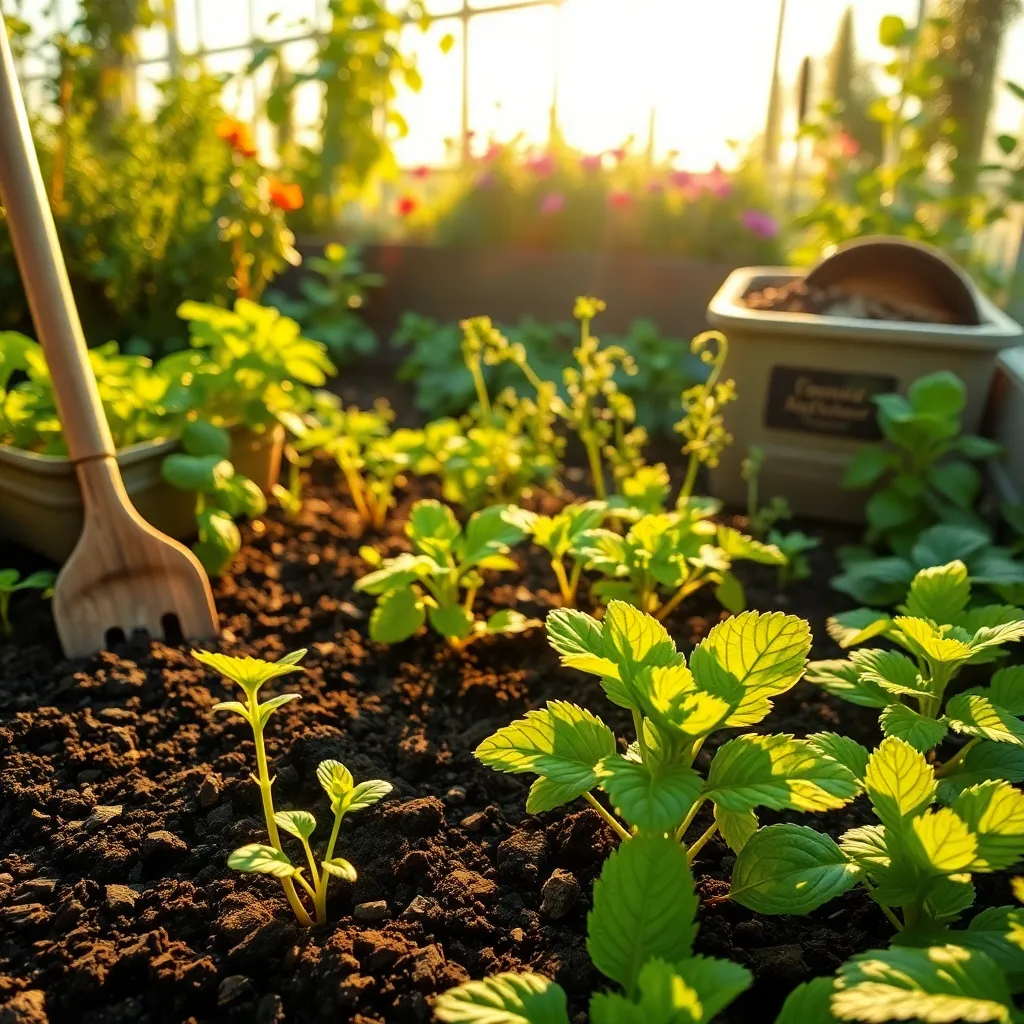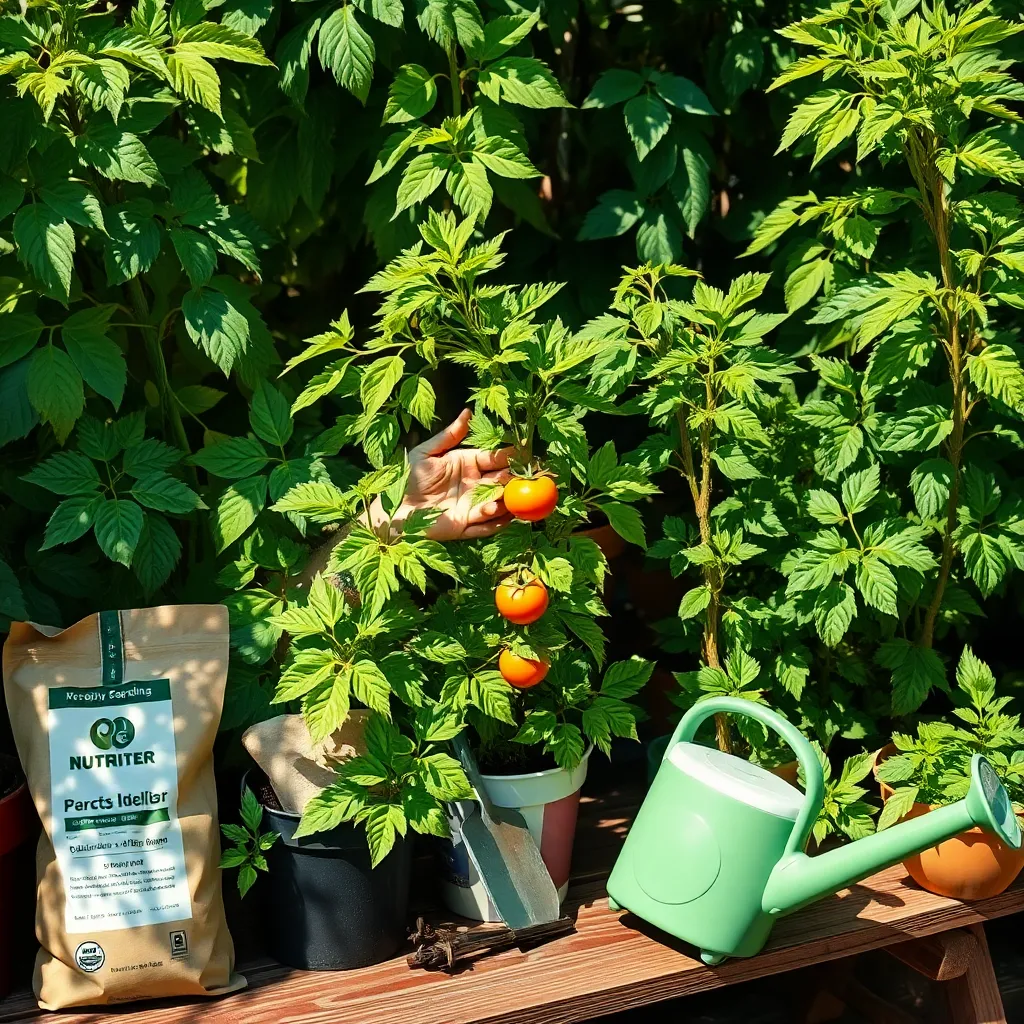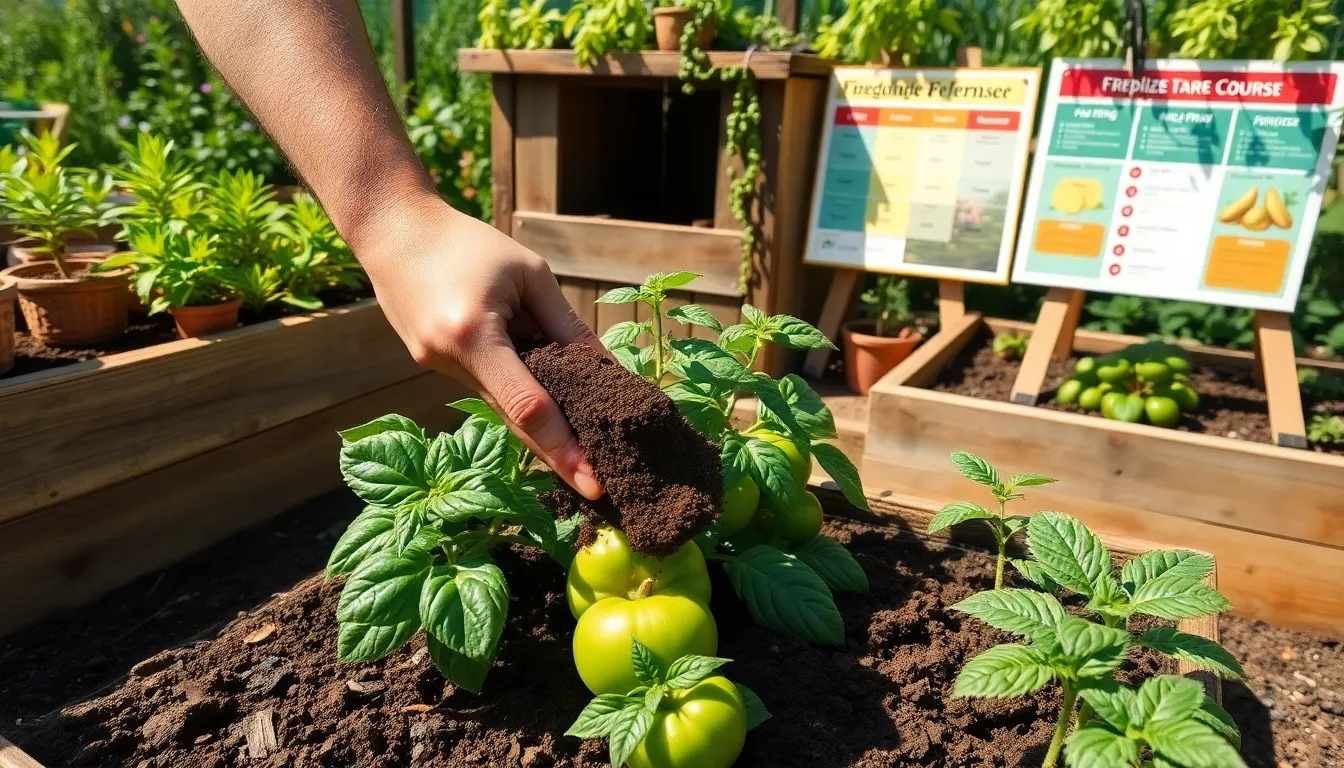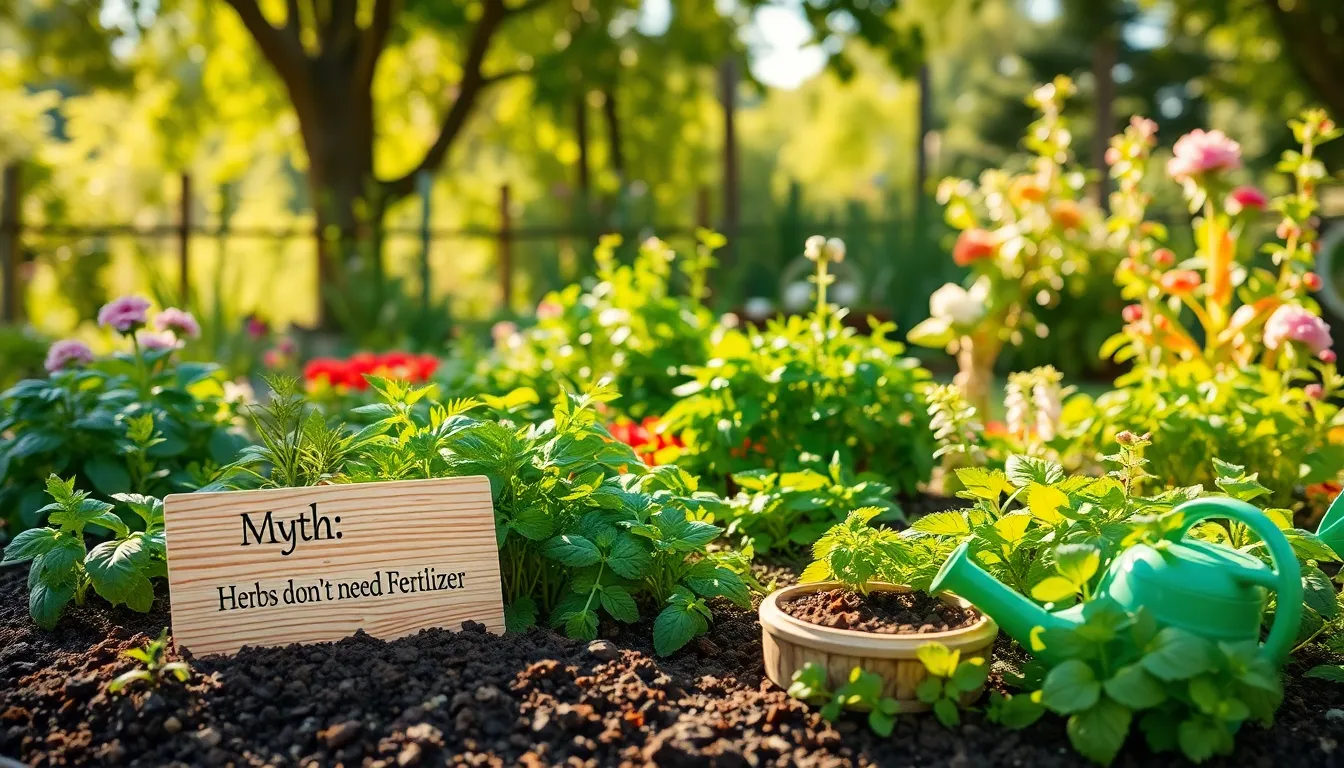Gardening is a journey of nurturing, observation, and joy, where each decision can shape the health and beauty of your plants. Fertilizing organically is a key aspect of this journey, offering a sustainable way to enrich your soil and support your plants without the harsh chemicals found in synthetic alternatives. Whether you’re just starting out or have a seasoned green thumb, understanding when and how to fertilize organically can elevate your gardening practice and lead to thriving, resilient plants.
The timing of organic fertilization is as much an art as it is a science, and it plays a crucial role in the success of your garden. In this article, we’ll explore the optimal moments for feeding your garden naturally, aligning with the rhythms of nature to maximize plant health and growth. From recognizing the signs that your plants are hungry to understanding the seasonal nuances of organic fertilizers, you’ll gain insights that empower you to make informed decisions tailored to your garden’s unique needs.
You’ll also discover how different types of organic fertilizers can be used strategically throughout the year, providing nutrients in harmony with your plants’ growth cycles. By the end of this article, you’ll feel confident in crafting a fertilization schedule that not only nurtures your plants but also contributes to a healthier ecosystem. Let’s delve into the world of organic fertilization, where every application is a step towards a more vibrant and sustainable garden.
Understanding Organic Fertilizer Basics

Understanding organic fertilizer begins with recognizing its composition and benefits. Derived from natural sources like compost, manure, and bone meal, organic fertilizers improve soil structure and provide nutrients over time, unlike synthetic options which offer immediate but short-lived effects.
For beginners, using organic fertilizers can be a straightforward way to enhance soil fertility while promoting healthy plant growth. It’s essential to apply them during the growing season when plants are actively taking up nutrients, typically in spring and early summer for most regions.
Advanced gardeners might consider making their own organic compost to tailor nutrient content specifically to their plant needs. This can be done by combining kitchen scraps, yard waste, and other organic materials, ensuring a balanced nutrient profile that evolves as it decomposes.
To ensure effective use of organic fertilizers, consider testing your soil to understand its current nutrient levels and pH balance. This will guide you in selecting the right type of organic fertilizer, whether it be high in nitrogen for leafy greens or rich in phosphorus for flowering plants.
Additionally, always apply organic fertilizers according to the specific needs of the plants you are growing. For instance, heavy feeders like tomatoes and peppers will benefit from more frequent applications, while native plants might require less.
- Tip for Beginners: Start with a balanced organic fertilizer to address general nutrient needs while learning your garden’s specific requirements.
- Advanced Tip: Consider rotating organic fertilizers to maintain soil health and prevent nutrient imbalances over time.
Identifying Plant Growth Stages

Every plant goes through distinct growth stages, and understanding these can help you time your fertilization efforts more effectively. Typically, plants experience the seedling, vegetative, flowering, and fruiting stages, each with specific nutrient needs.
During the seedling stage, plants are establishing their root systems and require a gentle approach to fertilization. Using a diluted organic liquid fertilizer can provide the necessary nutrients without overwhelming young plants.
The vegetative stage is when plants grow rapidly in size and may benefit from a higher nitrogen content to support leafy growth. Consider applying a balanced organic fertilizer every 2-4 weeks, depending on your plant’s specific growth rate and soil conditions.
In the flowering stage, plants begin to shift their energy from leaf production to developing flowers. A fertilizer with higher phosphorus content can aid in robust flower development, enhancing your plants’ overall productivity.
Finally, during the fruiting stage, potassium becomes more critical to support fruit development and overall plant health. Organic options like compost tea or kelp meal can provide these nutrients effectively while maintaining soil health.
For advanced gardeners, monitoring soil pH and nutrient levels can optimize fertilization strategies tailored to each growth stage. Regular soil tests can inform you about nutrient deficiencies, allowing for precise adjustments to your fertilization routine.
Seasonal Timing for Fertilization

Timing your fertilization to match the seasons can significantly impact your garden’s health and productivity. In spring, as plants begin their growth phase, it’s crucial to provide them with a nutrient boost using an organic fertilizer like compost or well-rotted manure.
During the summer months, the focus should shift to maintaining the energy and vigor of your plants. This is a great time to apply a balanced organic fertilizer, such as a fish emulsion, to support flowering and fruiting without overwhelming the plants.
As fall approaches, gradually reduce fertilization to help plants prepare for dormancy. Instead of heavy feeding, apply a light layer of organic mulch to protect roots and conserve soil moisture during the cooler months.
In winter, most plants are in a resting phase and do not require fertilization. However, if you’re growing winter crops like leafy greens, a diluted compost tea can provide just enough nutrients to support slow growth.
Signs Your Plants Need Nutrients

Observing your plants carefully can help you determine when they need additional nutrients. One common sign is the yellowing of leaves, especially in older foliage, which often indicates a deficiency in nitrogen. To address this, consider applying an organic nitrogen-rich fertilizer, such as blood meal or fish emulsion, which can provide a quick nutrient boost.
Another sign is stunted growth or smaller than usual leaves, which may suggest a lack of phosphorus. This is crucial for root development and bloom production, so incorporating bone meal or rock phosphate into the soil can be beneficial. Ensure your soil has a balanced pH level, as nutrient absorption can be hindered in overly acidic or alkaline conditions.
Discolored leaf edges, often turning brown or crispy, might indicate a potassium deficiency. Potassium is vital for overall plant health and resilience against diseases, so adding wood ash or kelp meal can help correct this issue. Regularly test your soil to ensure it has the right balance of nutrients, preventing such deficiencies from occurring in the first place.
For advanced gardeners, monitoring micronutrient deficiencies can also be key in maintaining plant health. Iron deficiency, for example, results in a condition known as chlorosis, where new leaves turn yellow while veins remain green. To remedy this, you could apply chelated iron or incorporate compost rich in organic matter, which naturally improves micronutrient availability.
Best Practices for Organic Application

To ensure your plants thrive organically, it’s crucial to choose the right time for application. In general, organic fertilizers should be applied during the growing season when plants are actively taking up nutrients.
Consider the type of organic fertilizer you’re using, as some require different application methods. For instance, slow-release fertilizers like compost should be worked into the soil before planting, while liquid fertilizers can be applied directly to the foliage during the growing season.
Watering practices play a significant role in the effectiveness of organic fertilizers. Always water the plants after applying granular fertilizers to help nutrients penetrate the soil and reach the roots.
For bountiful results, monitor soil health regularly. Use a soil test kit to determine pH levels and nutrient deficiencies, allowing you to tailor fertilizer applications to your garden’s specific needs.
Advanced gardeners can explore creating their own organic fertilizers, like compost tea or fish emulsion. These homemade options not only enrich the soil but also promote beneficial microorganisms, enhancing overall plant health.
Additionally, timing is key when applying organic fertilizers. Avoid fertilizing just before heavy rain, as this can wash away nutrients before they’re absorbed.
Conclusion: Growing Success with These Plants
In navigating the nurturing of our green companions, we’ve uncovered five pivotal relationship concepts that resonate deeply with our own human connections: timing, balance, understanding needs, nurturing growth, and patience. Just as plants thrive when fertilized at the right time, relationships flourish when we are attentive and responsive to our partners’ needs. Balance in nutrient input parallels the give-and-take essential to sustaining healthy interactions. Understanding the unique requirements of our loved ones enriches our connections, fostering an environment where growth is encouraged. Lastly, patience is key, as both plants and relationships need time and care to blossom fully.
As an actionable step, take a moment today to reflect on one area in your relationship that could benefit from a mindful adjustment, whether it’s offering more support or simply listening more attentively. To continue nurturing your relationship journey, bookmark this article as a trusted resource you can return to whenever you need guidance.
Remember, just like a well-tended garden, your relationships can flourish with the right care and attention. Embrace these insights and watch your connections bloom into lasting successes. Your journey to enriched relationships begins now.




